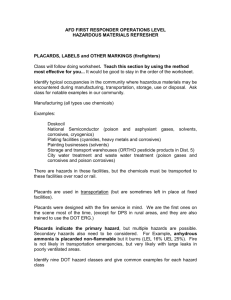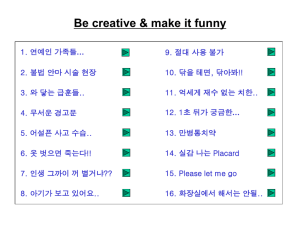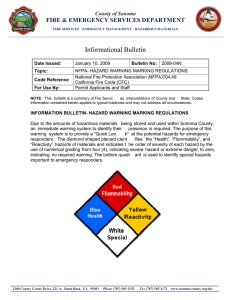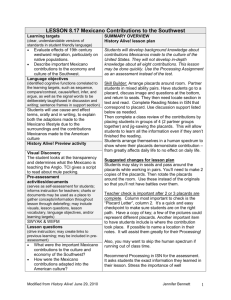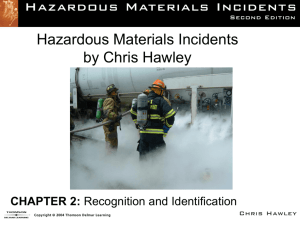Removing the Dust from the ERG PART II
advertisement
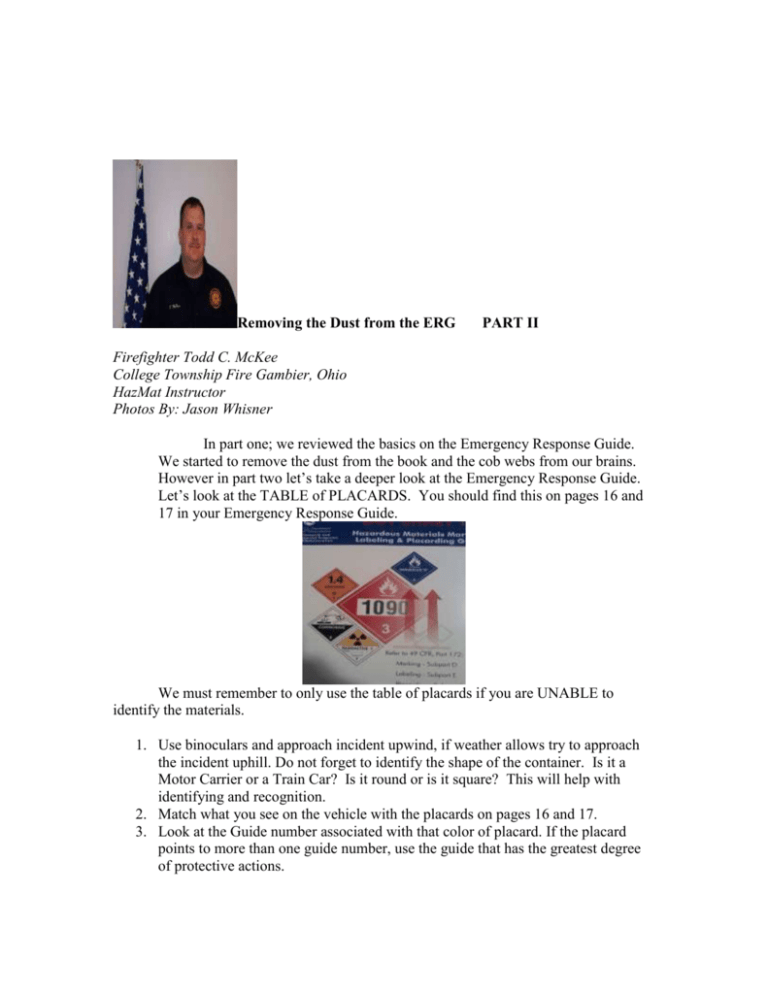
Removing the Dust from the ERG PART II Firefighter Todd C. McKee College Township Fire Gambier, Ohio HazMat Instructor Photos By: Jason Whisner In part one; we reviewed the basics on the Emergency Response Guide. We started to remove the dust from the book and the cob webs from our brains. However in part two let’s take a deeper look at the Emergency Response Guide. Let’s look at the TABLE of PLACARDS. You should find this on pages 16 and 17 in your Emergency Response Guide. We must remember to only use the table of placards if you are UNABLE to identify the materials. 1. Use binoculars and approach incident upwind, if weather allows try to approach the incident uphill. Do not forget to identify the shape of the container. Is it a Motor Carrier or a Train Car? Is it round or is it square? This will help with identifying and recognition. 2. Match what you see on the vehicle with the placards on pages 16 and 17. 3. Look at the Guide number associated with that color of placard. If the placard points to more than one guide number, use the guide that has the greatest degree of protective actions. 4. Remember the guide pages are orange and I like to call them our “DECSION MAKING” pages. These guides provide the most significant risk/hazard information. 5. We still need to do research to find as much information as possible pertaining to the situation. When that information becomes available we need to turn to the correct decision making pages and begin taking actions from these pages. 6. In part ONE we spoke about Guide 111; we use this Guide when we have no further information to go by. Remember we still need to do our best to find the much needed information. This is done AS SOON AS POSIBLE! 7. Asterisks (*) on orange placards are EXPLOSIVES See PAGE 359 8. Double Asterisks (**) are the DIVISION OF explosives 9. The circle with the number inside represents what GUIDE we use to make our decisions 10. The small number inside the PLACARD represents the UN HAZARD CLASS (see page 14) 11. Red is FIRE 12. Blue is HEALTH 13. White is SPECIAL 14. Yellow is REACTIVITY ORANGE PANELS (TOP) Hazard numbers (see page 20-23) (BOTTOM) Four Digit UN ID Number TOP Double digits double the hazard (88,44) The hazard associated with material can be adequately indicated by a single digit then the digit is followed by 0 X means that the material reacts violently to water (X33). Remember if material reacts to water. This could cause a Toxic Inhalation Hazard. This then could produce additional chemicals along with additional hazards. (SEE Pages 45-349) When a 9 appears as 2nd or 3rd number the material may be at risk of violent spontaneous reaction. BOTTOM UN Identification number 4 Digits Use Yellow pages in Emergency Response Guide Gather Guide Number (Orange Pages) Make Decisions from there Removing the dust from the Emergency Response Guide takes time. However it all depends on you! Be safe and train, as training will save lives!


